Species that live in the state of Sonora
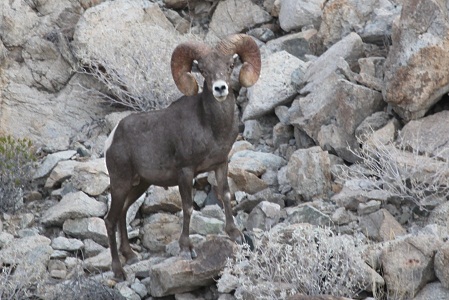
Bighorn sheep (Ovis canadensis mexicana)
It is the only goat native to Mexico (Wilson and Reeder, 1993). Females Males differ depending on a pronounced sexual dimorphism, expressed in adult males with the presence of massive horns and forming a spiral recurved rearwardly and outwardly, with the forward facing ends. The horns of males can measure about 450 mm and a maximum diameter of 660 mm in total length, in fact, in proportion, bighorn sheep have larger antlers among all ruminants. Females are smaller and thinner horns, limited bending, directed upward and backward, never form spirals. The dorsal coloration generally is light brown with shades of buff, for its part, ventral coloration is pale brown or whitish, sometimes yellowish. The back of the legs is usually whitish. You will find variations of tones of geographical sites and as subspecies.
Condition: Ovis canadensis Ovis canadensis is protected in Mexico through the Mexican official norm of endangered species (SEDESOL, 1994, SEMARNAT, 2002) as a species subject to special protection. This indicates although populations are not abundant, it is possible to use some of them for sport hunting under strict control measures by the authorities. Legally only game in fewer than 20% of adult males per season.
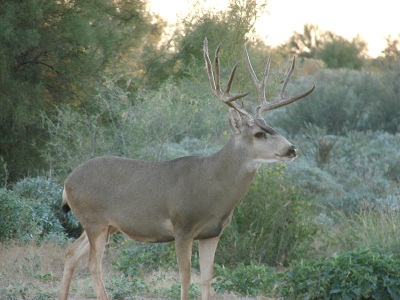
Mule Deer (Odocoileus hemionus)
It is a large and robust deer. The antlers branching dichotomously, in contrast to the white-tailed deer which are fingerlike. The tail is sparsely populated in hair, of a uniform color yellow with the tip topped with black hairs. The ears are very large. Adult males have a dark reddish or almost black Testus.
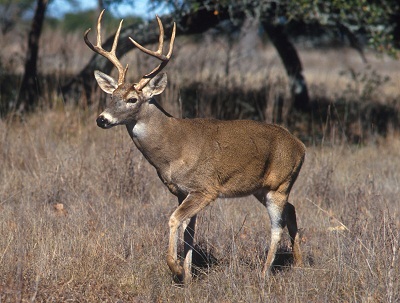
Whitetail Deer (Odocoileus virginianus couesi)
White-tailed deer is characterized by the tuft of white hairs at the base of the tail that bristles when excited or in flight and a stylized fine (Leopold, 1959). The neck is long and elongated head. The legs are of average height, thin but very strong. Only males have antlers, which are directed outward and forward of the skull, with a main branch emerging from 2 to 6 branches, regularly, ears, large size, are approximately 50% of the length head, although of smaller definitely o. Hemionus. (Leopold, 1959). Your body is grayish-brown in winter and reddish in the summer, but not all subspecies change color in the coat. Fawns have a reddish mottled white fur to 3 months of age. The belly is white, like the inside of the legs, the tail is brown or gray on its outer side, with the inner edges and surrounded by long white hairs. The metatarsal gland is between 15 and 30 mm. The lacrimal fossa is much shallower than inO. Hemionus.
Return
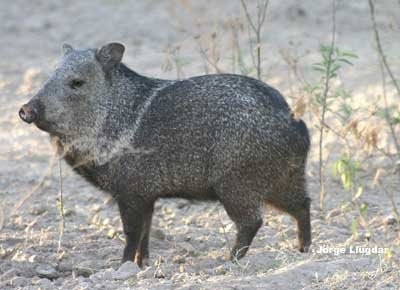
Javelina (Pecari tajacu)
The peccary is a similar sized artiodactyl a dog. The body is robust, vestigial tail and big head. The canines are widely developed and nose ends in a nasal disk. The limbs are short, thin and terminate in hooves, the above feature and the subsequent four digits three, and in both cases only two fingers are functional. Coloration in adults varies from gray to black on the extremities and trunk, pale on the belly and the tip of the ears has a yellowish or whitish stripe collar way on both sides of the neck. In the northern part of its distribution in the adult coloration becomes darker in winter. The coat color of pups ranges from yellowish or reddish brown, presenting a darker stripe on the dorsal midline, after three months the color of the offspring becomes like adults. The coat is composed of bristles at the back are thicker and longer than in the rest of the body has a mane erectile along the dorsal midline from the head (Leopold, 1959). Musk presents a gland in the rear of the back. No significant sexual dimorphism.
Return

Puma or Mountain Lion (Puma concolor)
The Puma is a large feline. The coloration of the back and the head is yellowish or sandy brown, varying to reddish brown, the belly is whitish. The coat is short and dense. The tips of the ears and tail are black. Presents clear facial markings, with a white patch around the muzzle and a black patch at the base of the whiskers. The legs are long, the hands are robust and have five toes, while the later have four. The nails are long, strong and shrink. The young of the species are spotted, the spots disappear between six and ten months. Sample a variety of colors, size and weight, according to the subspecies in question, generally are larger northern and southern subspecies and the smaller Central. The average weight is 60 kilos to 40 kilos males and in females (Alvarez del Toro, 1991).
Return
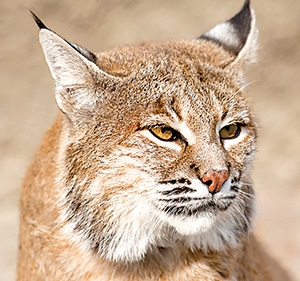
Wildcat (Lynx rufus)
The Lynx or Bobcat is medium sized. It has long legs, stocky body and short tail, the ears are large and pointed. Its coat is reddish brown slightly mottled with gray and black on the upper parts and white tones and dark spots on belly. At the tips of the ears on the sides of the face and tail with a black spot (Hall, 1981; Leopold, 1965; Wilson, 1993). Although the weight and body size vary geographically, by size is considered the third largest cat that lives in Mexico.
Return

Coyote (Canis latrans)
It is a medium sized canid. It has a long snout and small eyes, relatively together. The skin color ranges from gray to reddish brown and shades through the tail has a black tip. In the lower parts colors are always lighter. The ears are large and pointed. (Leopold, 1965).
Return
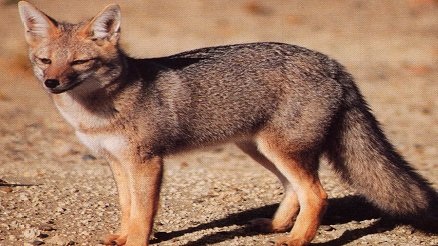
Gray fox (Urocyon cinereoargenteus)
It is a medium sized canid. The throat is white and gray face, the sides of the neck, abdomen and base of the tail are reddish. The back is gray. The tail also in the upper gray, black having a distal end and a dorsal midline of the same color. The colors of the upper and lower parts are delimited by an opaque brown band that runs along each side of the body (Hall, 1981; Leopold, 1965)
Return
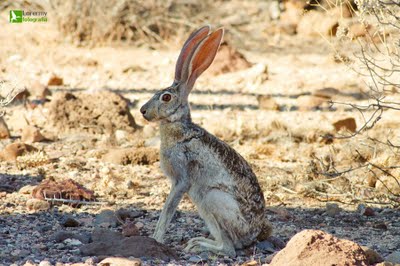
Hare (Lepus alleni)
The Hare is one of the largest in North America. The back is yellowish brown, mixed with black, from the neck to the hindquarters, the sides of the body, including the sides of front, hip and rump white, with black-tipped hairs that give the appearance of gray clear. The midline of the belly is white, and the inner sides of the legs, the inside and back of front and sides of the neck are light in color that contrasts with the yellow chest. Hairless ears, except for the tips, are white, except a strip on the edges and the ends, where the hairs are short and yellow white. The back of the tail is black mixed with steel, extends to the legs. Plant is brown legs and white top. This hare is noted for its white sides, the yellowing of the throat region and its huge ears (Mearns, 1890).
Return
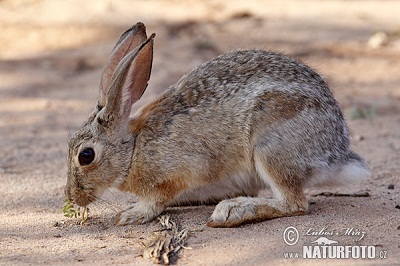
Rabbit (Sylvilagus audubonii)
Desert Rabbit is the genus Sylvilagus. His front legs are long and the rears are thin and lack the dense fur that is observed in other species of the same genero.las long ears and balding on the outside (Chapman and Wilmer, 1978). The back and tail are gray and white belly (Chapman and Ceballos, 1990, Chapman et al., 1982). Unlike other wild rabbits Mexico the tympanic bulla is well developed and the above process is prominent orbital skull (Hall, 1981).
Return
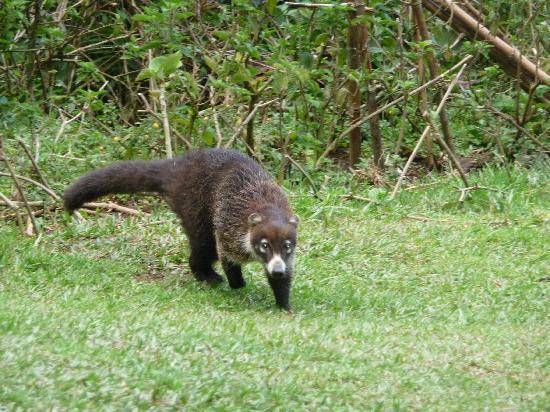
Coati (Nasua narica)
Procyonid size is similar to a medium dog. Its body is long and slender. The tail is long and often carried erect. The snout is long and pointed and the tip is very mobile (Gompper, 1995, Hall, 1981; Kaufmann, 1987). It has well developed and strong claws on each of the five toes. Males are slightly larger than females. The dorsal coloration varies from shades-dark brown and brown-reddish to brown-gold, in the neck and shoulders tends to brown-gold, in populations of northeastern and northwestern Mexico coloration is brown-gold tones, while the southern-brown tones are dark. The fur around the eyes, edge of the ears, throat, chin and tip of the nose has a whitish or yellowish color much lighter than the rest of the body. Around eyespots have a dark coffee-colored stain, like a mask. The tail is often darker rings (Kaufmann, 1987; Leopold, 1959).
Return
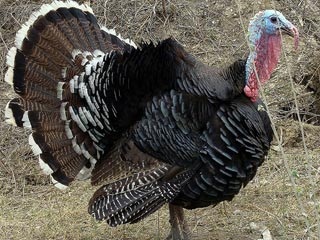
Wild turkey (Mellagris gallipavo)
Wild turkey (Meleagris gallopavo Linnaeus, 1758) is a long-bodied bird plumage and striking, with great visual and audio capabilities, size and overall appearance is similar to the common turkey pens. The average weight of an adult female varies between 3.6 and 5 kilos, and that of an adult male between 7.7 to 9.5 kilos, although there may be heavier copies. The male has a bare head, with an extensible fleshy forehead and a double chin in front neck blue back, red throat except in summer when the "gill" begins to spread and the whole head turns red, the plumage the body is dark brown with bronze iridescence of red, green and gold and the edge of the black body feathers are velvety. A tuft of bristles like feathers chest projecting up to 30 cm. As the animal grows. The primary feathers of the wings have black and white lines, secondaries brown and white lines and larger coverts with iridescent purple lines. The tail is dark brown drawings and clear with a subterminal band of black, the tips of the tail feathers and upper and lower coverts are white copies in western and central Mexico, while in the northwest are dull brown and the feet are red with well-developed spurs (Kennamer, m. C. 2005; Kennamer, m. C. 2005b; Valencia, 1998).
Return
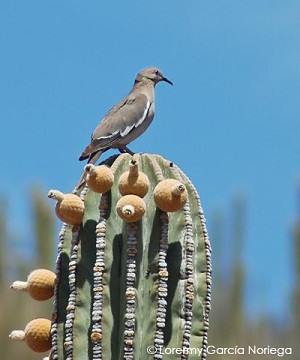
White-winged Dove (Zenaida asiática)
This species has the following features: face, head, neck and breast are yellowish buff, shading of gray around the base of the bill and to white on the throat, to the sides of the neck is dark mauve pink. It has a black spot under each handset. The primary wings have a white band, which is a crucial feature of this species.
The external measurements are: wing chord 147-166 mm, tail 95 to 113 mm, peak 19-24 mm and tarsus of 23-26 mm. The weight varies between 130 and 196 gr.
This species covers a wide variety of habitats from sea level to altitudes near 2000 m and sometimes more. It is found mainly in tropical regions (tropical deciduous forest) and on the coast, as well as arid regions (thorn scrub and mesquite). Very common in agricultural areas.
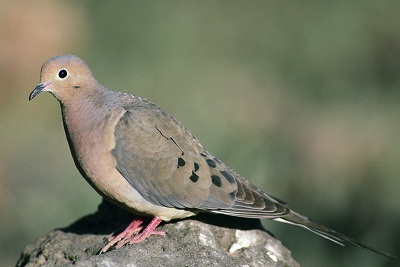
Mourning Dove (Zenaida macroura)
The main features of this species is that it is a medium sized bird with long pointed tail, the top of the head, back, rump, wing coverts and feathers of the tail center, gray brown, feathers flight wings dark gray, the more intense secondary prominently stained black, front, sides of the head and neck, as well as the lower parts of a deer-like color, darker on the chest and pale forward until the under tail coverts, the sides of the tail feathers graduated in size, the longest to the center, shorter on the sides and all widely bordered with white gray 30-40 mm at the base, with a white band in the middle , black bill, red legs and feet.
Return
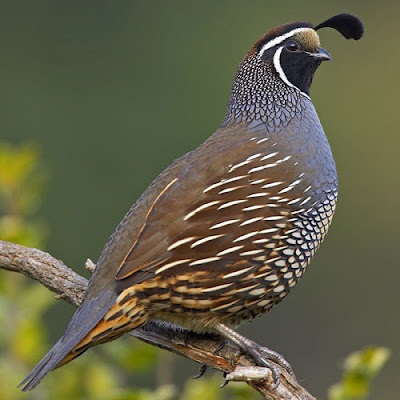
Gambels Quail (Callipepia gambelii)
Replaces California quail in the desert, is similar to this, but the male has a black patch on the belly and the crown of reddish brown color. The female does not have the scaly pattern on the belly as the California quail.
Montezuma Quail (Cyrtonix montezumae)
It measures 17.5 to 24 cm. Decorated like a clown face, with abundant pale combs, not always erect. And the body of the male spotted. The female is brown, with a less marked facial pattern. Docile, is able to withstand long periods without rain. They hide in the grass if disturbed.
Return
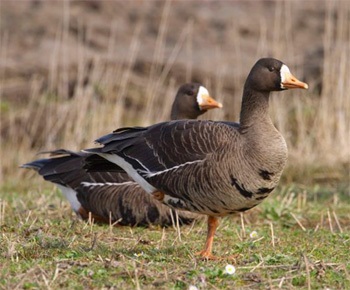
Chalcuan Duck (Anas americana)
It measures 45 to 57.5 cm. The male has a bright white crown. It is recognized by the large white patch on the inside of the front wing. The male is brown, gray head, white crown patch on the head of a strong bright green, large patch on the front wing and white patch on the sides near the tail light blue beak tip black. The female is reddish brown with a gray head and neck, belly and inner wing whitish.
Pintail (Anas acuta)
The pintail duck is quite large, which has a wingspan of 23.6 to 28.2 inches. Males measure between 59-76 cm long and weighs 450-1360 grams, are considerably larger than females measuring between 51-64 inches long and weigh 454-1135 gramos.12 the male in breeding plumage has the head and upper neck chocolate brown, while the rest of his neck, chest and belly are white, with a white line that extends towards the neck along the sides of the neck. The upper parts of his body and sides are colored mainly gray, but the feathers of the back have black centers to be long and give it a disheveled to the area. But the tail is black, with long central feathers, to a length of 10 centimeters. Its beak is bluish and the legs are bluish gray
Fuente : Gerardo Ceballos, Gisselle Oliva, 2005 "LOS MAMIFEROS SILVESTRES DE MÉXICO".
